When discussing all the folk dances of Assam, it is necessary to know what ‘the folk culture of Assam’ means. Folk culture of Assam refers to the various rituals, religious ceremonies, folklore and songs, traditionally celebrated by the different ethnic groups living in Assam since ancient times. Therefore, the Assamese folk culture is a culture made up of various tribal cultures.
The tribes or ethnic groups of Assam include the Boro, Rava, Miching, Dimasa, Sonowal Kachari, Garo, Karbi, Tea ethnic groups, Maran, Matak etc. The main occupation of these tribes is agriculture. Therefore, most of the folk dances of Assam are agricultural. These dances often reflect the region’s vibrant history, religious beliefs, and agricultural way of life. Here is a complete list of traditional and folk dances of Assam.
Bihu Dance of Assam
The Bihu Dance of Assam serves as a significant celebration standard, renowned as one of India’s most exuberant and uplifting folk dances. For the people of Assam, Bihu is not merely a festival; it’s a moment to rejoice in their livelihoods and cultural heritage concurrently. This traditional dance form is an integral part of Assam’s heritage, and the festival symbolizes the unity in diversity, with various groups presenting their unique interpretations of the same underlying concept. Bihu dance marks the commencement of the Assamese New Year, the sowing season, and the onset of the wedding season.
During the festivities, the banks of the Brahmaputra River burst into life with the pulsating rhythms of the Dhol (drum) and the melodious tunes of the Pepa (flute). Dancers assemble in circular formations, commencing with a slow tempo that gradually picks up momentum. The musical ensemble includes drums, cymbals, hornpipes, harps, and Khanjanis (bamboo clappers). Amidst the pristine beauty of nature, young boys and girls perform this dance, accompanied by songs that carry sentiments of love and romance. The Dhol beats with vigor, the Pepa produces soft melodies (crafted from buffalo horns), and various other indigenous folk instruments add to the vibrant ambiance.
Despite its agricultural origins, the dance infuses an atmosphere of love and romanticism through its songs and graceful movements. This dance is celebrated for its commitment to authenticity and its role in showcasing traditional Assamese handlooms and handicrafts, garnering widespread recognition for their beauty. Women’s attire typically includes a Gitigee (a type of headgear), Agoo (mekhela), and Lagu Richa (chaddar). They adorn themselves with intricately crafted ornaments, while men wear a Dhoti, Gomocha (towel), and Chapkan (shirt). Together, they synchronize their steps to create the enchanting spectacle of the Bihu Dance.
Moran Bihu
Moran Bihu is a typical form of Bihu Dance practiced by the Moran tribe of Assam. Generally, young Moran boys select a place far away from the din and bustle of the city. Here they make a wooden bamboo-house known as the Bihu- Ghar. The Ghar is separated into two areas – one for the young boys and the other for the girls. Their songs and dances are woven around the theme of love and yearning. Indigenous instruments such as the Dhol and Pepa provide the musical accompaniment.
Deori Bihu or Bisuyo Jama Dance
The Deoris of Assam are a riverine tribe that originally belonged to the Lohit district of Arunachal Pradesh. They have preserved and maintained their traditions, religious beliefs and practices. The Deories celebrate the Bohag Bihu or Bhohagiyo Bihu and the Magh Bihu or Maghyo Bihu. The Bisuyo Jama Dance is one of the most attractive dance forms of the Deori tribe of North East Assam.
In the Deori dialect Bi’ means extreme or excess and Su’ means rejoicing, indicating a time for rejoicing. The most important festival of the Deori community is ‘Bohagiyo Bisu, which lasts from a week to a fortnight. The young boys and girls spend the late evenings dancing to the rhythm of melodious Bisu songs. Through this celebration, the Deoris pray for the peace and prosperity of the village.
Mishing Bihu
Mishing Bihu is a form of Bihu dance associated with the Ali-Ai Ligang festival (seed sowing festival) of the Mishings. This folk dance of Asssam demonstrates the various stages of the process of cultivation from sowing to reaping. The Bihu songs of the Mishing tribes have a telltale note, a lovely ‘eiiyoo oh’ that rises and falls, reminiscent of a cowherd is calling out to his beloved who is busy reaping the paddy. The Mishings have a starkness in their Bihu that captures the spirit of the festival, of Spring, fertility, longing, of the beautiful kopon flower (the Assamese orchid), and love like no other. It is the time to sing about Jonki and Panoi, the Romeo and Juliet of the Mishings.
Jeng Bihu
Jeng Bihu is an ancient form of Bihu Dance from Upper Assam. Only women perform this form of Bihu Dance on a moonlit night in a place far away from an inhabited area. The word ‘Jeng’ possibly means an obstructive barrier between the performers and the audience. However, with modernity this form of folk dance of Assam is often performed in stages and auditoriums.
Bordoishikla
The Bodos like the other communities of Assam have nurtured their own distinctive music and dance forms. They have contributed towards upholding the cultural traditions of Assam to a large measure. Bordoishikhla is a very special folk dance form of the Bodo community, dedicated to the Goddesses of storm (Bordo) and water (Shikla). It is closely associated with harvesting and is performed to welcome a good Monsoon. The dancers perform with Khanjanis in their hands, which provide the rhythm for their movements. The colourful costumes worn by the dancers and graceful body movements make the dance fascinating; leaving their hair undone, the dancers create fast movements, weaving circular, horizontal, and parallel patterns. This folk dance of Assam is performed to the accompaniment of traditional musical instruments like Kham, Siphung, Jotha, Charinda and cymbals.
Bagroomba
The most attractive of all the folk dances of Assam and the Bodo community is the Bagroomba. which has young girls assembling in a particular area of the village to perform the dance as a means to relieve themselves of their wearisome days’ work through singing, dancing and merrymaking. Holding the ends of the colourful scarves strung around their necks, the dancers move forwards and backwards in a swinging motion, dancing with gay abandon. The dance begins in a straight line but eventually falls into a circular pattern. This graceful dance is performed to the accompaniment of the Kham (drum), and Siphung (flute).
Mwsaglangnai Dance
The most popular dance of the Bodos, the Muchaglargnai Dance has young girls dancing to the lively beat of the Kham, a traditional musical instrument. The lively tunes and the colourful attire of the dancers, (consisting of the dekhona and aarnia) make this dance particularly interesting and attractive. This is folk dance of Assam has no particular season can be performed throughout the year.
Hamzar Dance
Hamzar dance is one of ancient folk dances of Assam. This folk dance is performed by the Rabha community. Hamzar refers to an age-old agricultural tradition of cultivating paddy on land cleared of forests in the hills and plains. This form of agricultural practice is known as Jhum or “alash and burn” cultivation and has been practiced by many tribes from primitive times. It is still largely prevalent among the Rabhas. The tradition of Hamzar has well- defined roles for the Rabha men and women: while the Rabha men clear the land by cutting down the trees of the forest, the women folk scrub d sweep the land. Both men and women take part in ploughing the land and sowing the seeds. The men keep vigil at night to protect the farmland. They spend the night on raised platforms known as ‘Robongs’. During the day, the women take care of the crops by scaring away the birds and insects. Both men and women take part in the reaping of the harvest. All this is very aesthetically depicted in the Hamzar Dance.
Farkanti Dance
The Rabhas believe that the souls of the dead are reborn in this world not only as human beings, but also as animals and birds. According to ancient belief, the three birds, Manchelenka, Tandalenka and Batiktika represent the souls of the departed. During the performance of the Farkanti Dance, these birds are used as symbols of friendship and trust. The Farkanti Dance is performed after the death of a person, in the presence of the kith and kin of the deceased, his friends and community. The purpose of the dance is to enliven the sorrowful atmosphere in the deceased person’s family. Through the dance, prayers are offered to show reverence and respect to the departed soul.
anDhaowa Dance
Hostilities, struggles and conflicts that ultimately culminate in battles and wars have been part of human existence from time immemorial. The brave Rabha people have been faced with such situations innumerable times and have fought many battles with other hostile groups. The Dhaowa Dance is performed ceremonially just before the Rabba warriors set out for the battlefield. This dance form symbolises the bravery and undaunted spirit of the Rabba people that defies defeat or even death.
Hanaghora
Hanaghora is an attractive folk dance of the Pati-Rabhas living in the South Western part of the Kamrup district, named and performed in honour of the God of Fortune.
Langkhon Fuja Mishawa
Langkhon Fuja Mishawa is a traditional dance of the Tiwa tribe of Assam. Tiwa means Enlightened People. The people belonging to this tribe were originally known as the Laloongs and they inhabited the western part of the Nagaon district of Assam. The Tiwas observe Beusakh Bihu, Magh Bihu and many other religious festivals. All their festivals start on the first Wednesday of the related month.
The Langkhon Fuja Mishawa is performed during the festivals observed in the months of November, December and nuary. The theme of the dances is man’s relationship with and dependence on nature. The dancers wear colourful traditional costumes and carry decorated bamboo sticks. Singing, drum- beating and the melodious strains of the flute accompany this very enjoyable.. and choreographically interesting tribal dance form.
Barat Dance
The Barat Dance of the Tiwas is associated with the Usha Barat Festival celebrated on the full moon night in December. During the festival, young girls of the village fast during the day. This beautiful dance is performed in the evening. The girls, sometimes wearing masks, begin with the burning of 360 lamps. The tribal King of the region joins the people in their festivities. The celebrations are very grand at Tetolia, home of the Tiwas.
Mishing Gumrak
The Mishings are one of the largest plain tribes of Assam. All-Ai-Ligang is their most important festival, held every year in the month of Falgun. The dance form associated with this festival is Gumrak. The dancers demonstrate various stages of the process of cultivation through their performance. The atmosphere is charged with the music of the dumdum, pepa, siphung and gung gang. The girls perform this rhythmic dance, attired in their best Ribigaseing and Ribiyege. The festival continues for five days and during this time dancing and feasting takes place in the courtyards of the village homes. The festival concludes with Dapan Tipan’ or a community feast. The last day of the festival is called ‘Lilen’.
Domahi Kikang
The Karbi tribe of Assam performs the Domahi Kikang Dance during Spring. There are two varieties of this dance, one is performed by the Karbi tribes living in the hilly areas of Assam and the other is performed by the Karbi residents of the plains. The Karbi youths carry decorated swords and present a very enchanting dance.
Jhumur
The Jhumur Dance is a traditional, highly rhythmic folk dance of Assam and is extremely popular with the Kulis’ (people who work in the tea gardens). The dance is usually performed during Autumn It is secular in concept and has a distinct identity. The dance is performed to the rhythmic accompaniment of the Madal. The young and old dance together, wearing costumes that are different from the traditional costumes worn for the Bihu dance.
Pangba Dance
According to tribal belief, the movement of the stars destines man’s fate. One such ancient belief is that during certain movements of the stars, the different Gods of Diseases enter the human body causing different ailments. Of the many Gods of Diseases, the most ruthless is God Pangba’. When he enters the body, the person experiences immense pain. The tribal communities believe that performing a prayer dance in front of the deity can cure the ailing person. In essence, the Pangba is a prayer dance and is performed to calm down a hostile God. It is a helpless plea of man to the mysterious, unknown and sometimes hostile forces of nature.
Santhar Dance
The Santhar Dance is part of the Festival of Baikho Puja in the Killa Dibi Khai tradition. The festival ends with much celebration and the Santhar Dance is an integral part of it. The dances describe the joys of youth and love. The Santhar Dance is also a medium for conveying proposals for marriage.
Ojhapali and Deodhani Nritya
This traditional dance belongs to the pre-Sankarite era. It is performed during the celebration of Manasha Puja. The dance has a vigorous rhythm and the dancers often go into a trance during the performance. The Ojha narrates the Manasha Purana with his Paalis. The Ojhapali is followed by the Deodhani Nritya, which cannot be performed without performing the former first.
Nowadays, during an Ojhapali recital. stories on different social themes besides those from the Puranas are also enacted. The Ojha expresses the content of the stories through songs and gestures and the Paalis follow it by repeating the lines. In the course of the performance, they present short items depicting the movements of animals and birds. The musical instruments used are the Dhol and Khanjani. The Ojha wears the conventional dress of the Sutradhar. Young unmarried girls dedicated to Goddess Manasha perform the Deodhani Dance. The dance is performed in front of the deity to the accompaniment of the Jai-Dhol and Bhortal (big cymbals) with graceful hand gestures and intricate footwork.
Kushan Dance
The Kushan Pala and Kushan Dance is a folk art form popular in undivided Goalpara district of Western Assam, Jalpaiguri and Coochbehar districts of North Bengal, Purnia region of Bihar, Rangpur and Mymensingh district of Bangladesh, Tuochi region of Bhutan, Jhapa region of Nepal and the Western region of Meghalaya. This ancient, traditional and religious art form draws its theme from the Ramayana. In the Kushan Pala we find a union of song, dance, narrative and dialogue.
The word Kushan is derived from the Sanskrit word “Kushilab”. Kushilab is the first preacher of the Valmiki Ramayana. It is believed that the Kushan Play and Dance are derived from songs from the great epic, sung by the sons of Lord Rama, Kush and Luv.
There are two types of Kushan Play or Dance, based on the musical instruments used – Bena Kushan and Dotara Kushan. The number of performers in a Kushan Play or Dance is fifteen to sixteen. They are designated by different names such as Mul or Geedal or Kushani, Pali or Pail, Dohari, Bain, Chukuri or Chokara.
The Mul or Geedal is the main singer of the Kushan Play. He has to be proficient in singing, dancing, theatre and playing of different musical instruments. There are three or four is or musicians in the Kushan Pala. The chief Pali is known as the Daina Pali. The Dohari is the main assistant to the Geedal. The Dohari must not only be proficient in singing, dancing, acting and playing of musical instruments but should also have presence of mind. The cast also includes one or two Bayans who play the Khol or Mrirdanga. Either a young boy dressed as a girl or a young girl plays the role of the “Chukuri” or dancer.The different musical instruments used include the Bena, Khol, Mandira, Sarinda and Bansi. The play opens with the Kholabar or Opening Concert. This is followed by the Abahan or Ram Vandana. The dancers then perform the Saraswati Vandana. This is followed by the Saptakanda Ramayan.
Goalini Dance
Songs and dances are an integral part of the lives of the people in Goalpara district. This traditional dance describes the process of harvesting. The dance, which is performed by the wives of the farmers during the harvesting season, begins with a Laxmi Baran or invocation of Goddess Lakshmi.
Baitha Maro Dance
The river Brahmaputra and its tributaries flow through the undivided Goalpara district of Assam. The Baitha Maro Dance describes a very popular sporting event of this area-boat racing. Special songs and dances that cheer the boatmen to win the race are associated with this sport.
Jikir and Jari
During the time of Shankaradeva, Muslims joined in devotional prayers sung in Hindu temples, while Hindus joined in the chords of Zikir songs (the word Ziqr in Arabic means remembering Allah’s name).
A Zikir is a religious or philosophical poem and a Zari, narrating the tragic tale of the Karbala, is elegiac in character and content, much like a Marshiya. The Muslim Saint Hazrat Shah Miran, popularly known as Ajan Fakir, who had migrated from Baghdad to Assam, composed the original Zikir songs. Unlike other religious songs like the Bargeet, Zikir songs are composed in colloquial Assamese, making them popular among the people. Generally, Zikir songs are accompanied by dancing and performed by the Muslim villagers on social occasions such as community feasts and weddings.
Bhortal
The Sattriya Dance form was introduced in the fifteenth century A.D. by the great Vaishnava saint and reformer of Assam, Srimanta Shankara Deva, as a powerful medium for the propagation of the Vaishnava faith. Ile integrated art and bhakti through music, dancing and drama. His aim was the upliftment of the Assamese society, which was ridden with religious malpractices. He was opposed to caste privileges and this appealed to the broad tribal base of the state. Through his simple dramas in the Brajabali language, he made the audience aware of the Bhakti Rasa and selfless devotion for the Supreme Being.
The Bhortal Dance is an innovation of the famous Sattriya Dance, the classical dance form of Assam. Introduced in the latter part of the 20 century by Slul Naralian Butablakt (a Vaishnavite devotee of the Barpota Sattra of Assam), this invocatory dance is performed with big cymbals. On the anniversaries of the Vaishnava saints, the devotees assemble in the courtyards of the Kirtan Ghar (Prayer Hall) and sing and dance in praise of Lord Krishna.

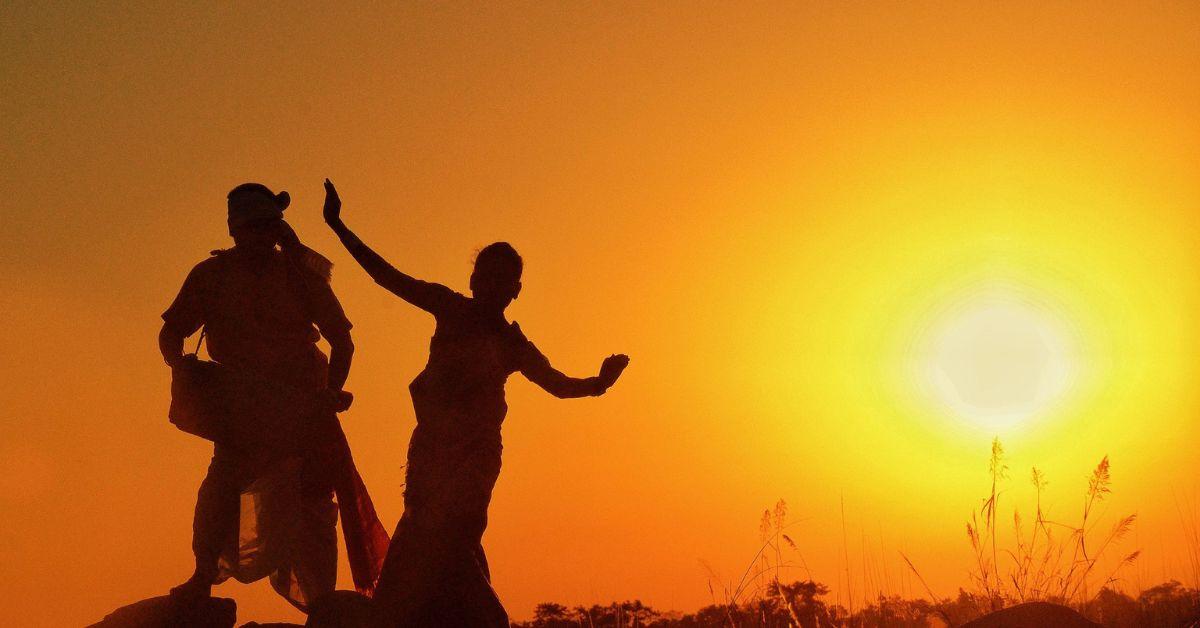
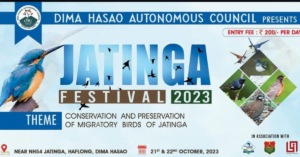

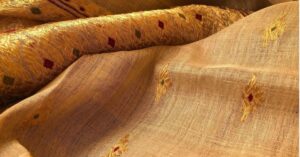
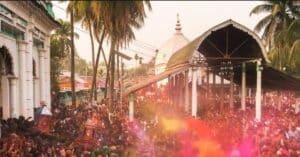

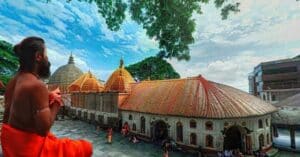

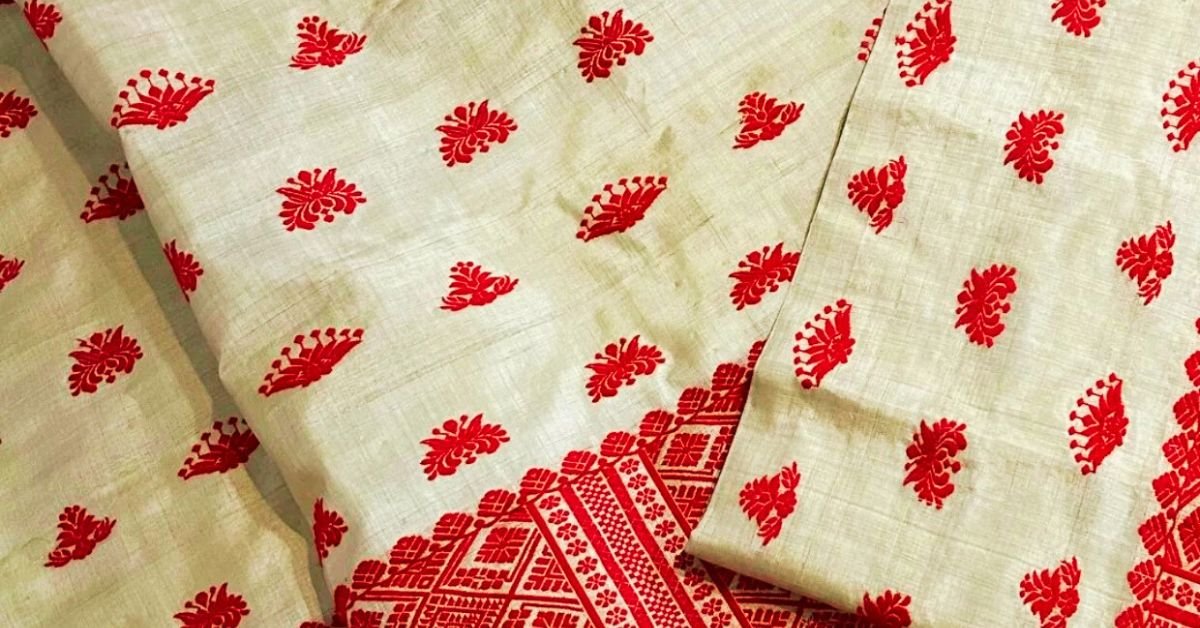
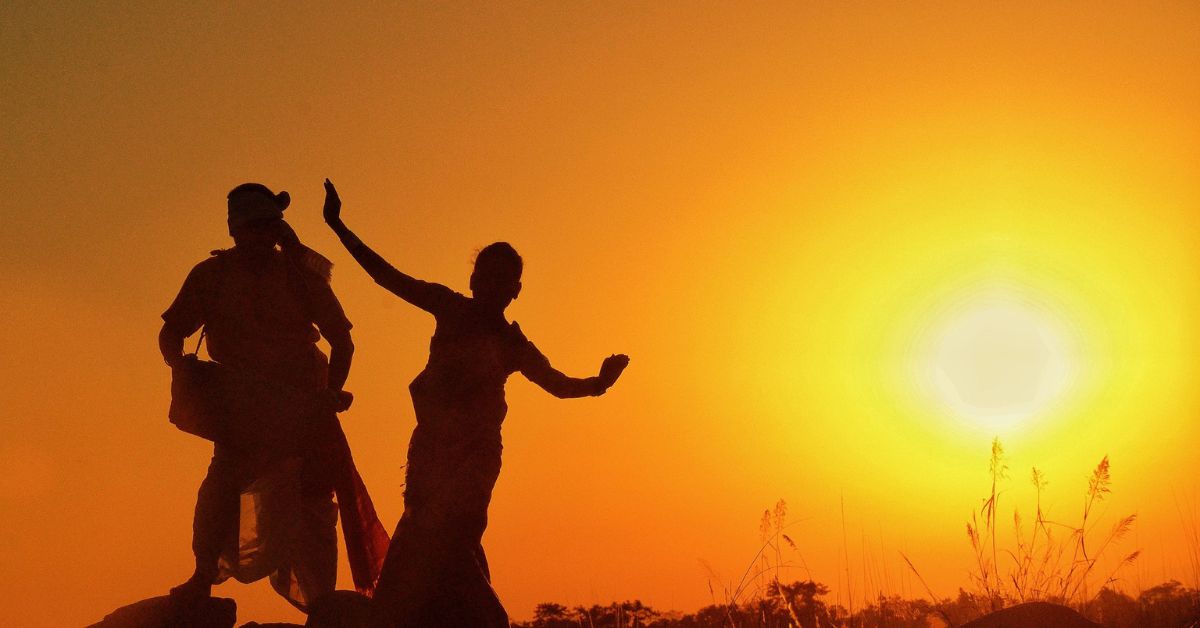
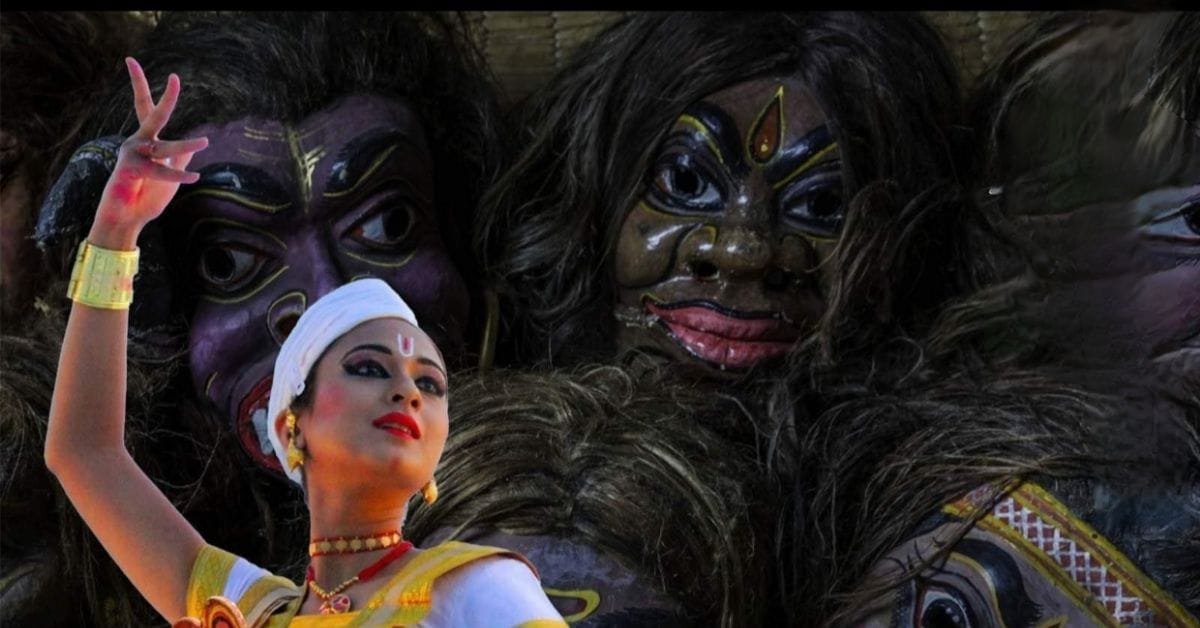
One Response
This blog beautifully celebrates the vibrant folk dances of Assam, showcasing their importance in preserving the state’s rich cultural heritage. It’s a wonderful tribute to the rhythmic traditions that have been passed down through generations. Great job!